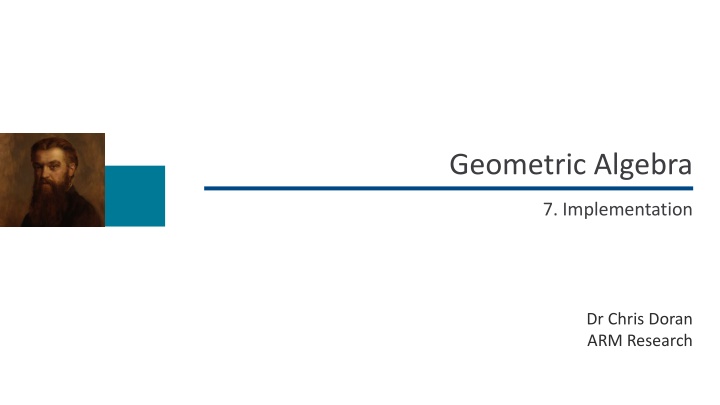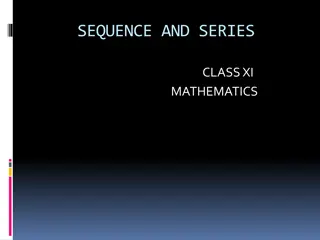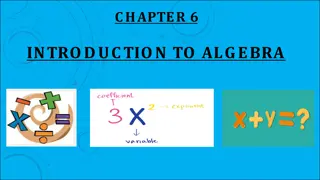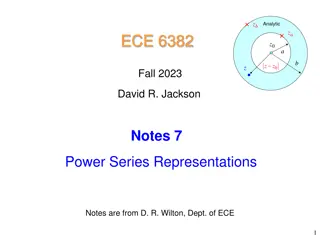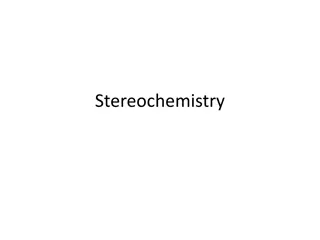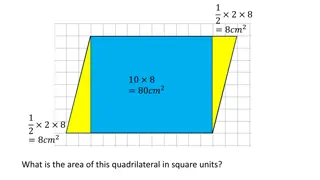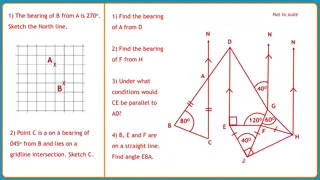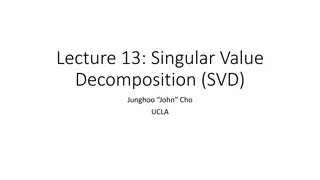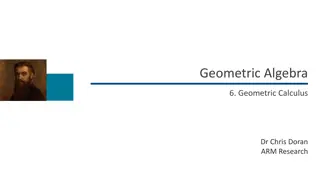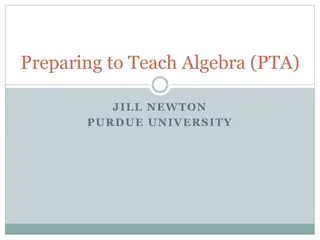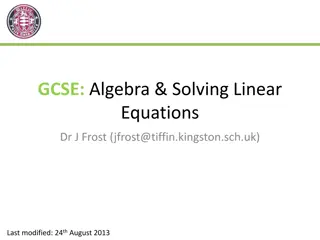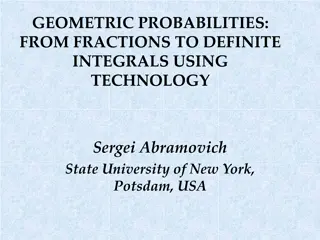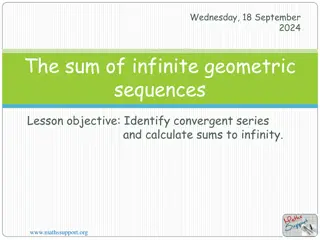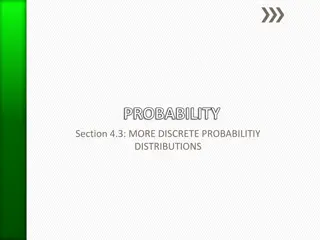Implementation of Geometric Algebra Structures
Data structures and implementations related to geometric algebra, including the symbolic computation with Maple and various aspects of programming languages. Dive into the considerations for choosing appropriate data structures and product implementations for efficient computation in geometric algebra.
Download Presentation

Please find below an Image/Link to download the presentation.
The content on the website is provided AS IS for your information and personal use only. It may not be sold, licensed, or shared on other websites without obtaining consent from the author.If you encounter any issues during the download, it is possible that the publisher has removed the file from their server.
You are allowed to download the files provided on this website for personal or commercial use, subject to the condition that they are used lawfully. All files are the property of their respective owners.
The content on the website is provided AS IS for your information and personal use only. It may not be sold, licensed, or shared on other websites without obtaining consent from the author.
E N D
Presentation Transcript
Geometric Algebra 7. Implementation Dr Chris Doran ARM Research
L7 S2 Implementation 1. What is the appropriate data structure? 2. How do we implement the geometric product? 3. Symbolic computation with Maple 4. Programming languages
L7 S3 Large array Type: [Float] Vectors in 3D Bivector in 4D For Against Arrays are a hardware friendly data structure Objects are fairly strongly typed Do not need a separate multiplication matrix for each type Very verbose and wasteful Need to know the dimension of the space up front Hard to move between dimensions Need a separate implementation of the product for each dimension and signature
L7 S4 Compact array Type: [Float] Vectors in 3D Bivector in 3D For Against Objects are no-longer typed Size of the space needed up front Hard to move between dimensions Separate implementation of the product for each dimension, signature and grade Sum of different grades? Arrays are a compact data structure hardware friendly Most familiar Difficult to imagine a more compact structure
L7 S5 Intrinsic Representation Vectors in 3D As a sum of blades a1*e[1]+a2*e[2]+a3*e[3] For Against Strongly typed Dense Only need to know how to multiply blade elements together Multiplication is a map operator Don t need to know dimension of space Relying on typography to encode blades, etc. Still need to compile down to a more basic structure Need a way to calculate basis blade products
L7 S6 Symbolic algebra SA (Euclidean space) STA (Spacetime algebra) MSTA (Multiparticle STA) Default (e[i] has positive norm, and e[-i] has negative norm) Multivectors are built up symbolically or numerically Great for complex algebraic work (gauge theory gravity) Range of Symbolic Algebra packages are available: - Maple - Mathematica - Maxima - SymPy A good GA implementation for Maple has existed for 20 years: http://geometry.mrao.cam.ac.uk/20 16/11/symbolic-algebra-and-ga/
L7 S7 Examples Intersection of two lines res = 11*e[1]+9*e[2]+2*e[3] Case of parallel lines res = -e[1]
L7 S8 Examples vderiv2 := proc(mvin) local tx, ty, res; tx := diff(mvin,x); ty := diff(mvin,y); res := e[1]&@tx + e[2]&@ty; end: Maple procedure for 2d vector derivative for multivector function of x and y n := e[0] + e[1]; res := psi&@nn&@reverse(psi) 4*e[0]+4*e[1] Boosting a null vector:
L7 S9 GA Code Want a representation where: Multivectors are encoded as dense lists We carry round the blade and coefficient together (in a tuple) We have a geometric product and a projection operator The geometric product works on the individual blades Ideally, do not multiply coefficients when result is not needed All expressed in a functional programming language
L7 S10 Why Haskell? Functional Functions are first-class citizens The can be passed around like variables Output of a function can be a function Gives rise to the idea of higher-order functions Functional languages are currently generating considerable interest: Haskell, Scala, ML, Ocaml, F# Immutable data (Nearly) all data is immutable: never change a variable Always create a new variable, then let garbage collector free up memory No messing around with pointers! Linked lists are the natural data type
L7 S11 Why Haskell? Purity Functions are pure Always return same output for same input No side-effects Natural match for scientific computing Evaluations are thread-safe Strong typing Haskell is strongly typed, and statically typed All code is checked for type integrity before compilation A lot of bugs are caught this way! Strongly typed multivectors can remove ambiguity Are 4 numbers a quaternion? or a projective vector
L7 S12 Why Haskell? Recursion Recursive definition of functions is compact and elegant Supported by powerful pattern matching Natural to mathematicians Laziness Haskell employs lazy evaluation call by need Avoids redundant computation Good match for GA Higher-level code GA is a higher-level language for mathematics High-level code that is clear, fast and many-core friendly Code precisely mirrors the mathematics Programming in GA learnyouahaskell.com haskell.org/platform wiki.haskell.org
L7 S13 Bit vector representation of blades Details depend on whether you want to use mixed signature space Best to stay as general as possible Blade Bit vector Integer Geometric product is an xorr operation 1 0 0 e1 1 1 Careful with typographical ordering here! Have to take care of sign in geometric product f1 01 2 e2 001 4 f2 0001 8 e1f1 11 3 (Num a, Integral n) => (n,a) e1e2 101 5
L7 S14 Linked list Type: [(Int,Float)] or [(Blade)] Vectors in 3D As an ordered list (1,a1):(2,a2):(8,a3):[] For Against Strongly typed Dense Only need to know how to multiply blade elements together Multiplication is a map operator Don t need to know dimension of space Linked-lists are not always optimal Depends how good the compiler is at managing lists in the cache May need a look-up table to store blade products (though this is not always optimal)
L7 S15 Conversion functions int2bin :: (Integral n) => n -> [Int] int2bin 0 = [0] int2bin 1 = [1] Note the recursive definition of these functions A typical idiom in Haskell (and other FP languages) These are other way round to typical binary int2bin n | even n = 0: int2bin (n `div` 2) | otherwise = 1: int2bin ((n-1) `div` 2) bin2int :: (Integral n) => [Int] -> n bin2int [0] = 0 bin2int [1] = 1 bin2int (x:xs) | x ==0 = 2 * (bin2int xs) | otherwise = 1 + 2 * (bin2int xs)
L7 S16 Currying bladeGrade :: (Integral n) => n -> Int bladeGrade = sum.int2bin g :: (a,b) -> c f :: a -> b -> c f :: a-> (b -> c) Suppress the argument in the function definition. Haskell employs currying everything is a function with 1 variable. Functions with more than one variable are broken down into functions that return functions f takes in an argument and returns a new function
L7 S17 Blade product bladeProd (n,a) (m,b) = (r,x) where (r,fn) = bldProd n m x = fn (a*b) The bldProd function must (in current implementation) 1. 2. 3. Convert integers to bitvector rep Compute the xorr and convert back to base 10 Add up number of sign changes from anticommutation Add up number of sign changes from signature Compute overall sign and return this Can all be put into a LUT Or use memoization Candidate for hardware acceleration 4. 5.
L7 S18 Blade Product bldProd :: (Integral n, Num a) => n -> n -> (n, a->a) bldProd n m = ((bin2int (resBld nb mb)),fn) Returns a function in second slot where nb = int2bin n mb = int2bin m tmp = ((countSwap nb mb) + (countNeg nb mb)) `mod` 2 fn = if tmp == 0 then id else negate Counts number of negative norm vectors that are squared Counts the number of swaps to bring things into normal order
L7 S19 Geometric product [Blades] [Blades] A*B=simplify([bladeprod(a,b) | a <- A, b <- B]) Form every combination of product from the two lists Sort by grade and then integer order Combine common entries Build up everything from 1. Multivector product 2. Projection onto grade 3. Reverse Use * for multivector product
L7 S20 Abstract Data Type newtype Multivector n a = Mv [(n,a)] mv :: (Num a, Eq a) => [(a,String)] -> Multivector Int a mv xs = Mv (bladeListSimp (sortBy bladeComp (map blade xs))) longMv :: (Num a, Eq a) => [(a,String)] -> Multivector Integer a longMv xs = Mv (bladeListSimp (sortBy bladeComp (map blade xs))) Type class restrictions are put into the constructors. Two constructors to allow for larger spaces (Int may only go up to 32D)
L7 S21 Want to belong to Num class Class Membership instance (Integral n, Num a, Eq a) => Num (Multivector n a) where (Mv xs) * (Mv ys) = Mv (bladeListProduct xs ys) (Mv xs) + (Mv ys) = Mv (bladeListAdd xs ys) fromInteger n = Mv [(0,fromInteger n)] negate (Mv xs) = Mv (bldListNegate xs) abs (Mv xs) = Mv xs signum (Mv xs) = Mv xs Can now use + and * the way we would naturally like to!
L7 S22 Other resources (GA wikipedia page) GA Viewer Fontijne, Dorst, Bouma & Mann http://www.geometricalgebra.net/downloads.html Gaigen Fontijne. For programmers, this is a code generator with support for C, C++, C# and Java. http://www.geometricalgebra.net/new.html Gaalop Gaalop (Geometic Algebra Algorithms Optimizer) is a software to optimize geometric algebra files. http://www.gaalop.de/ Versor, by Colapinto. A lightweight templated C++ Library with an OpenGL interface http://versor.mat.ucsb.edu/
L8 S23 Resources geometry.mrao.cam.ac.uk chris.doran@arm.com cjld1@cam.ac.uk @chrisjldoran #geometricalgebra github.com/ga
